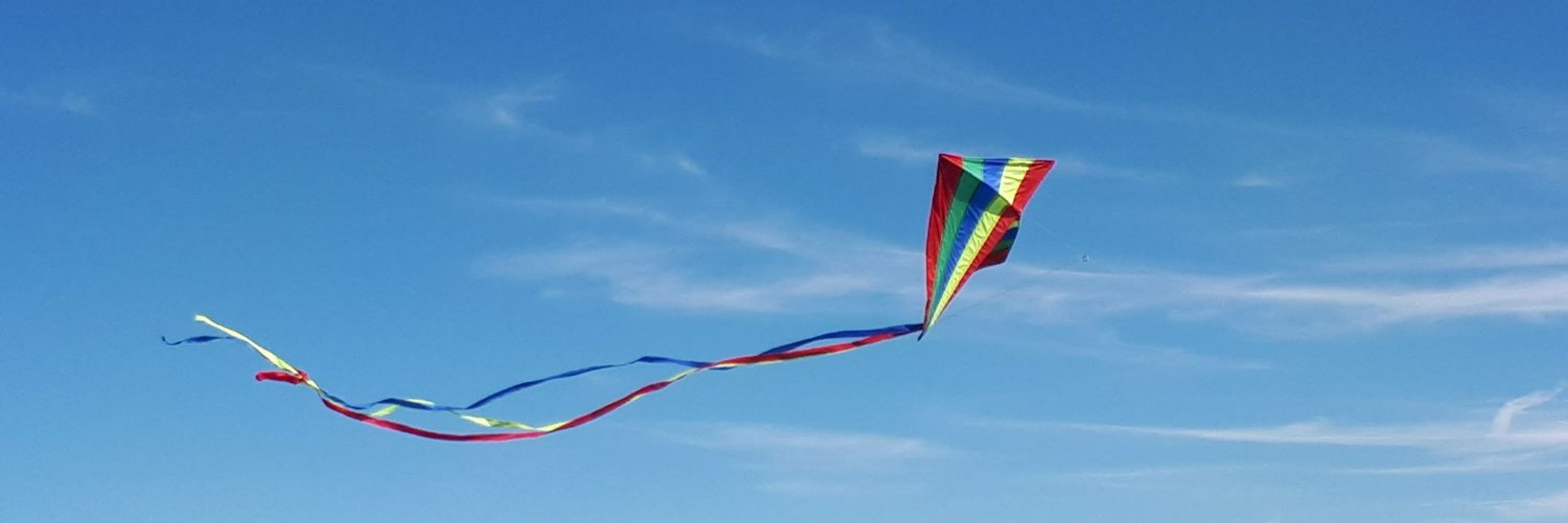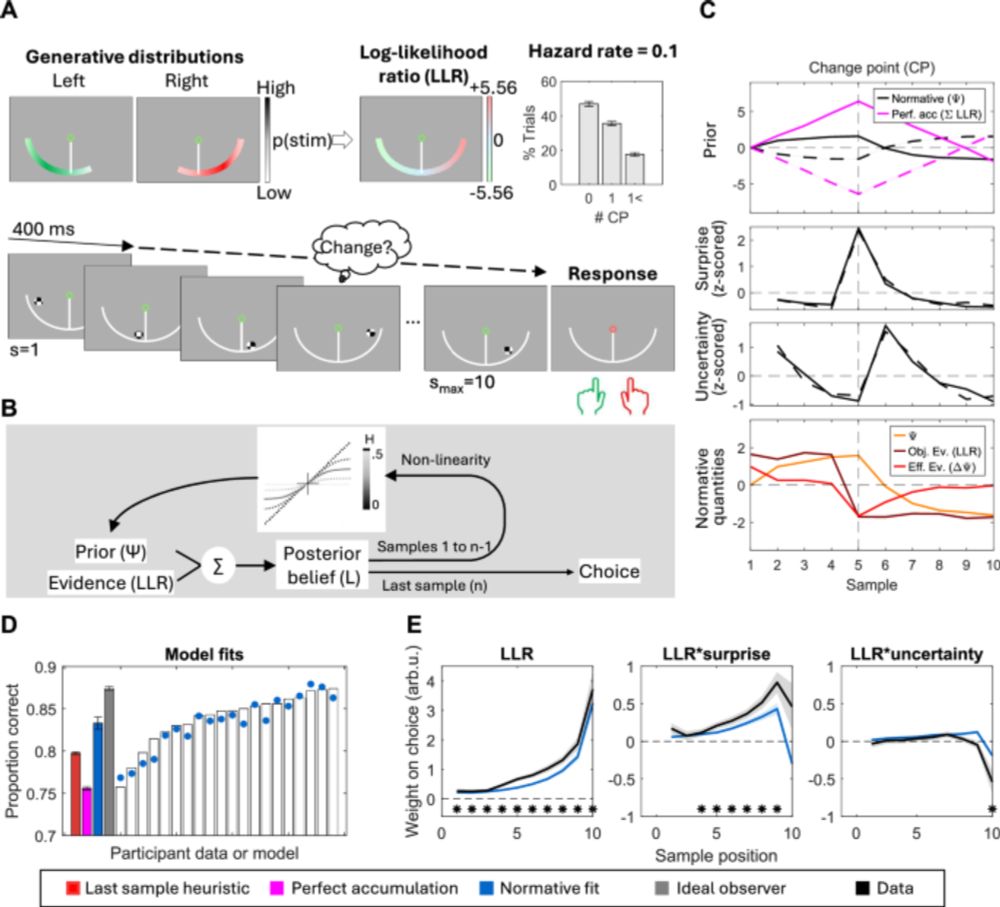
Elisabeth Parés Pujolràs
@epares.bsky.social
Cognitive Neuroscience postdoc @ucddublin, previously
@UCL_ICN. Interested in the science & philosophy of decision making, voluntary action and consciousness.
@UCL_ICN. Interested in the science & philosophy of decision making, voluntary action and consciousness.
Overall, our results highlight how prominent neural decision signals may take different shapes in different contexts, and how probing them using tasks that depart from conventional ones can provide important insights into their functional roles. Thanks for reading this far!
September 26, 2025 at 6:24 PM
Overall, our results highlight how prominent neural decision signals may take different shapes in different contexts, and how probing them using tasks that depart from conventional ones can provide important insights into their functional roles. Thanks for reading this far!
These results align with recent work in an expanded judgement task under volatility, where the CPP following individual tokens shows transient evoked activities that scale with context-optimal belief updates:
www.nature.com/articles/s41...
www.nature.com/articles/s41...

Dissociable encoding of evolving beliefs and momentary belief updates in distinct neural decision signals - Nature Communications
People are capable of making near-optimal decisions in volatile, changing environments. Here, the authors show how two neural decision signals encode distinct aspects of the belief updating process underpinning such adaptive decisions.
www.nature.com
September 26, 2025 at 6:24 PM
These results align with recent work in an expanded judgement task under volatility, where the CPP following individual tokens shows transient evoked activities that scale with context-optimal belief updates:
www.nature.com/articles/s41...
www.nature.com/articles/s41...
A simple bounded accumulation model could capture the key behavioural patterns in our data, and model-based simulations were able to reproduce the condition-specific profiles of the neural data (CPP & MBL) following each pulse 👇

September 26, 2025 at 6:24 PM
A simple bounded accumulation model could capture the key behavioural patterns in our data, and model-based simulations were able to reproduce the condition-specific profiles of the neural data (CPP & MBL) following each pulse 👇
Our participants sometimes terminated decisions early, tending to use the second pulse less than the first one, and CPP amplitudes following each pulse reflected this differential weight on choice (i.e. small CPP, small weight on choice), also capturing condition-specific differences in the effect.
September 26, 2025 at 6:24 PM
Our participants sometimes terminated decisions early, tending to use the second pulse less than the first one, and CPP amplitudes following each pulse reflected this differential weight on choice (i.e. small CPP, small weight on choice), also capturing condition-specific differences in the effect.
This transient pattern of activity stands in contrast to motor beta lateralisation (MBL), which keeps track of the total sum of accumulated evidence throughout the intervals between pulses and until response.
September 26, 2025 at 6:24 PM
This transient pattern of activity stands in contrast to motor beta lateralisation (MBL), which keeps track of the total sum of accumulated evidence throughout the intervals between pulses and until response.
We show that when noisy evidence for a single decision comes in temporally separate pulses, the centroparietal positivity (CPP) tracks multiple rounds of evidence accumulation, falling back down to baseline during the intervals in between pulses when no relevant info is presented.

September 26, 2025 at 6:24 PM
We show that when noisy evidence for a single decision comes in temporally separate pulses, the centroparietal positivity (CPP) tracks multiple rounds of evidence accumulation, falling back down to baseline during the intervals in between pulses when no relevant info is presented.
We believe our results hint at a flexible neural architecture that can adapt to different decision contexts, and highlight how the CPP may play a key intermediary role in adaptive evidence accumulation. Stay tuned for upcoming related work, and thanks for reading!
April 28, 2025 at 8:33 AM
We believe our results hint at a flexible neural architecture that can adapt to different decision contexts, and highlight how the CPP may play a key intermediary role in adaptive evidence accumulation. Stay tuned for upcoming related work, and thanks for reading!
The way that the CPP behaves in this task seems very different from its well-established characteristics in static contexts with continuous evidence (e.g. classic random dot motion tasks), where it reflects the absolute cumulative sum of evidence.
April 28, 2025 at 8:33 AM
The way that the CPP behaves in this task seems very different from its well-established characteristics in static contexts with continuous evidence (e.g. classic random dot motion tasks), where it reflects the absolute cumulative sum of evidence.
Further, we found that the centroparietal positivity (CPP) tracks effective evidence (i.e. it reflects how much a DV changes following a token, rather than just stimulus information), but it does not keep a sustained representation of the DV.
April 28, 2025 at 8:33 AM
Further, we found that the centroparietal positivity (CPP) tracks effective evidence (i.e. it reflects how much a DV changes following a token, rather than just stimulus information), but it does not keep a sustained representation of the DV.
We found that motor beta lateralisation kept track of an evolving decision variable (DV) in a sustained manner over trial time, consistent with previous MEG work:
www.nature.com/articles/s41...
www.nature.com/articles/s41...

Adaptive circuit dynamics across human cortex during evidence accumulation in changing environments - Nature Neuroscience
Optimal decision making in a changing world requires non-linear evidence accumulation. Murphy et al. report signatures of this adaptive computation in recurrent dynamics of human parietal and motor co...
www.nature.com
April 28, 2025 at 8:33 AM
We found that motor beta lateralisation kept track of an evolving decision variable (DV) in a sustained manner over trial time, consistent with previous MEG work:
www.nature.com/articles/s41...
www.nature.com/articles/s41...

